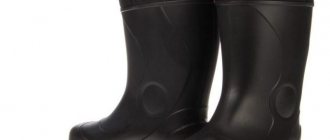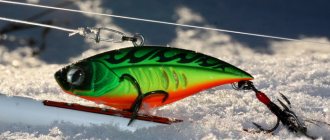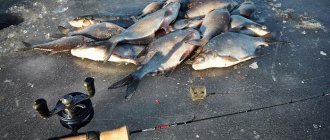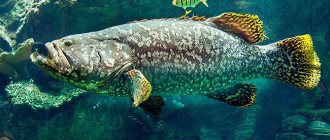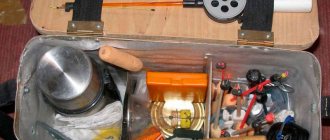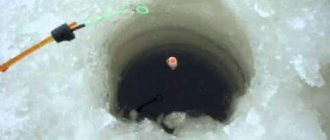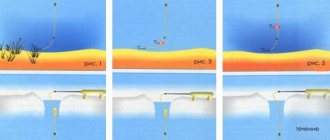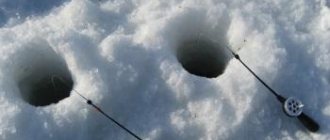Brief scientific background
Mormysh is a collective name. It is popularly known as several species of crustaceans found in rivers and ponds. However, ordinary fishermen do not even suspect this. For them, a mormysh is also a mormysh in Africa.
Varieties of Gammarus
However, I think it would be useful to mention the most common gammarus, which are found in fresh and brackish water in our latitudes.
- Gammarus lacustris . Leads an aquatic lifestyle, preferring deep lakes and reservoirs, as well as rivers with weak currents. Mainly feeds on detritus or algae. There is especially a lot of it in fishless lakes. Size - from 1 to 3 cm. This crustacean is most often found in commercial jigs, since it is easier to obtain.
- Gammarus pulex . It lives in the coastal zone of flowing reservoirs and rivers, feels good in slightly brackish water. The average size is 1 cm. It is nocturnal and can crawl to land in search of food - a very decent (by its standards) distance. Omnivorous, but the usual diet is soft parts of plants, as well as carrion. If it is very impatient, it can also become predatory, attacking small invertebrates.
- Gammarus roeseli . A European species, it lives in fresh water from the Netherlands to Turkey. The lifestyle is largely similar to previous crustaceans.
There are other types of amphipods, but they are less common or live in sea water.
An interesting fact is that some varieties of mormysh are found only in the underground waters of karst caves. And among them, in turn, there are endemic species - they live only in one cave and nowhere else in the world. An example is the famous Kungur Ice Cave.
Lake Baikal is especially distinguished in terms of the diversity of freshwater gammarus. There are as many as 250 species of them, among which there are also many endemics.
Meaning in nature
In nature, gammarus plays a very important role. As mentioned above, it is a valuable food for fish and other aquatic and semi-aquatic inhabitants. He is also a detritivore, a kind of orderly - absorbing animal and plant debris. Moreover, he does it quite quickly. The following has been noticed: as soon as some carrion appears in the water, crustaceans immediately cling to it. After a fairly short time - from a few hours to a couple of days - there is nothing left of it.
Mormysh is small, but brave - its jaws are powerful and sharp. There are known cases when crustaceans attacked fish caught in the nets and managed to gnaw through the threads of the nets.
Mormysh as bait
In the Urals, not all fishermen use gammarus as bait. Still, as bait, it is quite fragile. Most fishermen (especially urban ones) prefer to put bloodworms on the hook, and usually feed them with jigs.
Live jig
As a rule, jigs are delivered to the bottom in a feeder (most often mixed with breadcrumbs). Some fishermen simply throw it into the hole, but there is one small nuance.
According to some information, a crustacean released into a hole does not always sink to the bottom. It happens that, having gone slightly deeper, it immediately floats up to the lower edge of the ice.
I believe that everything here depends on the depth and bottom of the reservoir, respectively, on whether there is a noticeable difference in the oxygen regime between the bottom and the surface. Therefore, it is better to refuse feeding live jig directly through the hole.
Siberian fishermen recommend the following technique: a portion of crustaceans is placed on one palm, and the other - free - you need to slap them - to stun them. Then they are guaranteed to sink to the bottom.
In my opinion, it’s better to use a feeder. The only main thing is not to overdo it with the amount of jig so as not to overfeed the fish. But here, as it turned out, not everything is so simple.
There is an assumption that the very dense “caudla” of crustaceans can easily scare away fish, especially in the dead of winter. In our practice, something similar was observed: in the newly drilled hole there were periodic fish bites, but as soon as we sent the jig there, everything stopped, and for a long time. By the way, the smell of dead, rotten jigs, which are usually always found among live bait, could also be a deterrent factor, especially if it was stored for some time before fishing.
According to another version, during an unfavorable period, the fish quickly “gorges on” crustaceans. Oxygen is in short supply in the dead of winter, and digesting food requires a lot of it. So the fish is “on a diet”.
Boiled mormysh
Many fishermen feed with boiled crustaceans, and consider this method to be very justified.
It would seem that the steamed gammarus is worse than the living one, because it is motionless and does not attract fish with its vibrations. Not at all: the smell it exudes is many times stronger and more tempting. And the bright orange color that the jig takes on after cooking acts as a visual irritant.
From our own experience, we have been convinced more than once that boiled jig as bait is very good.
Usually it is thrown into the water in small portions - literally pinches. As in the case of live food, the main thing is not to overdo it. It has been noticed that the fish greedily pounces on the boiled crustacean and quickly fills its belly.
How to cook mormysh correctly is described at the end of the article.
Dried jig
Photo 3. Dried jig.
Gammarus can be dried for future use - a la “food for aquarium fish” [1] By the way, ready-made dried jig is sold in a pet store. And then add it to the bait - both whole and in crushed form.
When drying out, the jig loses most of the water it contains. As a result, all its nutritional, as well as taste and aroma properties seem to become “concentrated”. And so much so that it’s just right to be listed as an attractant.
We repeatedly threw dried crustacean into the bait - there was an effect. I also remember a conversation with one village fisherman, who even warned that it is possible to overdo it with this matter. From his words, it turns out that bait containing too much dried jig (this applies specifically to crushed crustacean) can scare away the fish.
We usually added whole dried crustacean to about a third of the total volume of bait. When crushed, it will occupy a noticeably smaller volume - two to three times less.
I will also tell you below, in the corresponding section, how to properly dry jigs.
Mormysh: production, storage and use
Feeding fish in the winter is not limited to the two traditional types, bloodworms and vegetable baits. Therefore, in this article I want to share a story about mormysh, its production, storage and use.
It is quite possible that not all fishermen in our vast country, and even more so abroad, know about the origin of such a crustacean, whose name is mormysh, since its production is not carried out in all regions of Russia, and transportation alive is practically impossible. Based on this, we can safely divide the caste of winter jig fishermen into three categories: those who use them, those who know from hearsay and those who do not know at all about the existence of such an aquatic organism, so I sincerely hope that the information I have presented will be useful to the reader.
Mormysh is a small crustacean that lives in clean, not always flowing water in fresh and brackish bodies of standing water and rivers. Widely distributed in the Urals and Siberia. These are the two regions where it is mined. But many do not even realize that it is present in the central zone of Russia and in other parts of our country, as well as beyond its borders, but in relatively small quantities, so only fish there are “familiar” with it. It also has other names, the most common being gammarus, hunchback, amphipod, and bormysh. According to the classification, mormysh belongs to the animal kingdom, phylum of arthropods, class of higher crayfish, order of amphipods, family Gammaridae, genus Gammarus, species Gammarus pulex. It is, as mentioned above, a small crustacean, somewhat similar to a shrimp, with 14 pairs of legs. Each of these pairs performs its functions in the life of the jig - from movement to holding food. The crustacean's food supply consists of various microorganisms, the remains of fish, snails, other aquatic organisms and rotting aquatic vegetation. The color of the jig, as well as its size, can vary depending on its habitat, species and age. As for color, these are usually shades of green with an admixture of gray, brown and red. Giving examples of size, I want to draw your attention to the fact that this is a crustacean creature, born from eggs that the jig carries on its legs before hatching, just like an ordinary crayfish. Accordingly, when specifying sizes, it is not a growing amphipod, but a sexually mature one, that is taken. For me, this is the one that has achieved maximum growth. This point can be determined only in two cases: either you yourself are engaged in fishing, or when, with constant use on fishing, you see when purchasing that the jig in the volume you purchased (and usually this is 200 - 300 g per day of light) is approximately one size. From the experience of frequently using jigs, and I have been fishing in the winter for 21 years, I can say that the smallest size of crustacean that I have encountered in my practice was about 2-3 mm. The average size ranges from 5 to 9 mm when bent. In the volumes of jig you buy, you can always find a suitable crustacean for the size of the hook, you just need to search a little.
Fishing for mormysh (amphipods) is done all year round. In the summer, he is least vulnerable, because... hides under stones, quicksand and in algae, but experienced miners who have been catching it for many years successfully cope with these difficulties. Fishing for mormysh in the summer is carried out with special traps. In hot and dry seasons, jigs are dried; in this form, they serve as excellent food for aquarium fish. After drying, gammarus is treated to remove microbes that can harm the inhabitants of aquariums. Dry jig is also used to feed valuable fish species on fish farms, as it is very nutritious. Bait manufacturers also add it to their mixtures.
Read: Flavors for crucian carp fishing
After freeze-up, when the oxygen level in the water begins to decrease, the amphipod rises under the ice, clinging to it from below, which makes it very vulnerable. They catch it in winter using scrapers, cutting mines or drilling large diameter holes in the ice. After harvesting, it is distributed mainly to stores, since in winter jig is one of the main elements in the diet of fish - and all fishermen willingly buy it. Of course, this applies to the regions where mormysh lives.
Since I have been closely involved in sports jig fishing for the last 6 years, I had the opportunity to attend competitions in different parts of Russia and Europe. One of the important moments for me when preparing for competitions is opening the fish after training, one might say, inspecting what it eats. Based on these studies, I can safely say that jigs are present almost everywhere I compete. I discovered the largest crustacean in the stomach of a perch during preparation for the 2015 World Championships in Finland, where I managed to become the winner in the individual competition. The size of that mormysh was 2 cm in the usual half-bent form, and about 2.5 cm when straightened. In Russia, in the same way, I found mormysh in the stomachs and intestines of fish on the Volga in the Tver region, in the rivers of the Kursk region and Bashkortostan, and other places, where I was able to take part in competitions. Having visited several starts in Siberia, I would like to note that the results there were achieved mainly by feeding jigs. At the Russian Championship in 2014 on Lake Baikal, it was also the main delicacy of local perches. It is worth noting that in Lake Baikal, scientists have discovered the largest number of species of the Gammarus family; according to their information, there are almost 250 different species of mormysh. There is also information about the presence of amphipods in the Voronezh region, which has hosted several winter All-Russian jig fishing competitions in recent years.
Amphipods are an important part of the diet of many freshwater fish in the Urals and Siberia. Most of my amateur ice trips are with this crustacean, so I often have to save gammarus from one trip to another. I store mormysh at home in the refrigerator. It is important to know that the crustacean tolerates two serious changes in temperature, no more, after which it begins to die, so you need to care for it carefully. The best option for storage is a temperature close to zero – from +1 to +3 °C. Then the jig becomes inactive, barely moving its paws. As a cold accumulator, I use a terry towel, which is rinsed in cold water and wrung out thoroughly, since high humidity leads to rapid deterioration of the crustacean.
I managed to keep the jig alive for a maximum of two weeks. To store for such a long time, you need not only to comply with what was mentioned above, but also, first of all, to purchase fresh amphipods, only brought from the extraction sites. It is also important to choose the right container, optimally a low, flat container.
Read: How to find your lucky hole
In such jars, the jig will not lie in a thick layer - accordingly, it will not crush each other, as, for example, in round high jars. In this case, the oxygen regime between lying individuals will not be disrupted - and your crustaceans will be able to live up to two weeks from the date of purchase. Do not forget that you need to leave a small gap between the lid and the jar for the flow of fresh air. The need for long-term storage of amphipods arises for me, as a rule, in the spring, and more specifically, during the period of last ice. The fact is that mormysh is mined in a neighboring region, geographically located to the south - accordingly, the ice there disappears faster by 7 (this is usually) or even 15 days. And amphipod fishing stops, which means it disappears in stores, so you have to buy it in advance and store it in order to catch it successfully. In large volumes, mormysh is stored in “breathable” bags, in damp rags or rags in cool, dark places (for example, in cellars) at temperatures close to zero. I would also like to note that mixing bloodworms with jigsaw during long-term storage is strictly forbidden; they will not live together for long.
For fishing, amphipods can be used either live or cooked. In both states, the crustacean can be used as bait and bait. There is nothing complicated in the boiling process. The main thing is not to forget to salt the water, in this case the crustacean turns out to be dense, it is more convenient to place it on a jig or hook, depending on what kind of tackle the fisherman uses. So, put live mormysh into boiling salted water (half a teaspoon per 2 cups of water), and then let the water boil again, just a matter of minutes. Next, rinse in cold water to remove excess salt and let the water drain using a colander.
When a live jig is immersed in boiling water, it instantly changes color. This phenomenon is typical for crustaceans. The fact is that they all feed on microorganisms that have organic pigments - carotenoids. In the body of crayfish, they interact with proteins; with the help of such a compound, all crustaceans can control their coloration, acquire the tones of their environment under water, thereby camouflaging themselves from enemies. When heat treated at temperatures exceeding 100 °C, this substance is destroyed - and the chitinous shell turns bright orange. The beauty of boiled mormysh, in my opinion, lies in its aroma and bright appearance. It often happens that fish react poorly to bait in the form of bloodworms or live jigs, but to boiled ones - perfectly. The same thing happens with complementary feeding. You can guess this moment only by sorting through one species or another, both as bait and as a bait. What’s great about our favorite hobby is that there is no template that always works; we have to experiment all the time. And if you didn’t succeed once, this does not mean that this experiment can be condemned.
Read: Rigging a fishing rod for roach fishing in winter
I prefer to attach jigs in two ways, each of them has its own rationale. In the first option, the most used, the jig is pierced with a hook under the inner part of the tail, in the area of the hind legs, and strung up to the head, where the eyes are located. The legs of the tail slightly cover the tungsten weight, thereby simulating a crustacean swimming with some piece of bottom debris. This version of the nozzle is very compact, which is sometimes important when catching a cunning perch, which, before attacking the jig, examines it from all sides. It is better to use jigs with a long hook reach - it is more convenient to place crustaceans on these. It is also important, in my opinion, that the mounted jig look visually larger than the tungsten weight. The last point concerns reservoirs with relatively standard and low concentrations of fish - and, as a consequence, with low fish activity. If you attach a jig larger than the shank of the jig hook, then when hooking a fish, the crustacean, since it is a fairly dense bait, has nowhere to move along the jig hook if it does not break. Thus, the hook cannot enter the body of the fish (in this case, the mouth area) along the barb of the sting, as a result of which we get an inevitable escape. Therefore, it is important to choose the optimal jig size relative to the hook, even if it takes some time.
I use the second method of attaching a crustacean very rarely, only when catching very capricious fish that have to be “persuaded” to bite. I put a jig on the hook, usually boiled crustacean, and sometimes it brings results. In this case, I begin to pierce the body of the jig in the head area, from the outside, so that the legs of the amphipod stick out. This version of the nozzle is more voluminous and serves as an irritant. Typically used during significant weather changes.
Feeding fish can be done with either live or boiled gammarus. Despite the fact that the flight of a live jig in the water is unpredictable (some of it may remain under the ice, some will quickly sink to the bottom, some will dive along a circular path, others will swim to the side), I still prefer to feed it from above. But at the same time, I make sure to add small or large bloodworms and boiled crustaceans, which fall vertically, thereby pulling the fish attracted by the live jig from a larger area under the hole. The main reason for feeding from above is that any bait, be it bloodworms or vegetable mixtures, is largely collected by fish at the moment of its fall or ascent. In this case, mormysh is an even more universal food that can even float up from the bottom after lying on it for some period of time. It is rational to use live mormysh in reservoirs with abundant aquatic vegetation at the bottom, when the bloodworms simply fall into the grass and become invisible.
In competition conditions, and especially at great depths, when a quick approach of fish is important, you can use a feeder and deliver the jig to the desired horizon, from where it will begin to collect fish.
Using jigs as bait and bait, you can successfully catch almost all types of fish in fresh waters, but most often these will be perch, ruffe, roach and bream.
Mormysh as a nozzle
If you use a live jig as a bait, then you need to put it on the hook shallowly - “from the tail”. So it moves for quite a long time and remains attractive to fish.
Rice. 1. Method of attaching a gammarus to a jig hook.
The same boiled jig is very good for bait. Its bright color and specific aroma have only a positive effect on the bite.
Winter river. The height of the wilderness. A group of fishermen arrived not long ago and drilled, hoping to catch a white fish. However, they don’t bite anything other than gudgeon, although according to rumors, the day before they caught chub and sorbug here well. We tried all the attachments we had - to no avail. Mormysh was available, but it was freshly purchased on the way to the fishing site. One of the fishermen thought of boiling water on a primus stove and pouring boiling water over a handful of baits. At first, voracious minnows still grabbed the boiled jig, but soon they disappeared somewhere, but chubs began to peck, some of which were quite good for winter.
Pounded jig as an additive to dough
Dried and ground into powder, gammarus can be added not only to bait, but also to a plastic bait - like dough or semolina. Or use it as a flavoring agent in boilies. In this case, usually a small amount of the additive is enough to give the bait a slight aroma of “freshwater shrimp”.
Sometimes this technique allows you to find that very “key” to a finicky crucian carp that just doesn’t want to bite.
Fragrant additive to bait and bait
Unfortunately, mormysh does not live everywhere. It is mainly used by fishermen in Siberia and the Urals.
Live jig
This crustacean is also known to many aquarists under the name gammarus. It is purchased dried and ground for feeding fish. Even in this condition, it will be quite useful to you on a winter pond.
Gammarus dry
They catch mormysh mainly in winter, because at this time of year it is more convenient to catch it.
Starting in February, these larvae rise to the very surface of the ice. In summer, they hide in dark and inaccessible corners of the reservoir.
If you use live mormysh for feeding, then the larvae must be slightly “muffled” before being sent into the reservoir. To do this, the crustaceans are poured into a cupped palm, and the other is slammed or simply pressed down lightly.
If you do not do this, they will not sink to the bottom, but will stick to the lower surface of the ice or, having sunk to the bottom, the moving jigs will scatter in different directions.
To feed, just throw a handful of crustaceans into the hole. But this method only works at depths of up to 3 meters and in the absence of current.
Feeding with mormysh
By sinking to the bottom and swarming in the ground, the crustaceans will attract fish. The main thing is that the bottom is not silted, since in this case the jig will be ineffective.
Don't put too many jigs into the hole. A large number of them can alert the fish.
Also sort out the crustaceans before using. You cannot send dead jigs that have begun to rot into the reservoir - the fish will definitely not be happy with such a treat.
Dried jig, which is also used to feed aquarium fish, gives especially good results when fishing. When dried, the crustacean loses a lot of water, so only the most nutritious and aromatic substances remain in it.
It also happens: Fishing for carp: how to catch carp with cake, with boilies and what gear is best for catching carp in the fall
Add it to your bait, and it will definitely attract capricious winter fish. You can use the crustacean, both whole and crushed.
Crushed dry jig for fishing
Also, for bait and bait, you can use crustacean scalded with boiling water. This type of jig acquires a bright color and a distinct aroma that fish really like.
Dry gammarus, crushed into a fine fraction, is used to prepare dough baits for fishing during the open water season.
The simplest composition of a nozzle with gammarus:
- Wheat flour;
- Ground dry jig;
- Water.
Preparation:
- Flour is mixed with crushed jig in a ratio of 1/4;
- Water is added;
- Elastic dough is kneaded.
When fishing, a small piece is pinched off from the dough and rolled into a ball. In this form it is placed on the hook. The bite won't take long to arrive.
Mormysh is the record holder for the amount of protein. Therefore, many types of fish are fed with it. They contain valuable carotene. It makes the color of the fish bright and colorful.
Fish should not be fed live or frozen crustaceans. The food is treated to remove bacteria and softens when treated with hot water. The crustaceans are filled with water for half an hour. If the chitinous layer has become soft, then the food is ready.
Dried food does not require preparation. If necessary, the feed is crushed for better consumption.
Don't feed your fish only crustaceans. Alternate with other foods, such as daphnia, bloodworms, tubifex, for better absorption and balanced nutrition.
Snails feed on gammarus 2–3 times a day. The crustaceans are not crushed, but given whole. Place small portions in a feeder, on the leaves of vegetables or aquarium plants, otherwise the product will spoil. After feeding, remove leftover food.
Mormysh is an excellent bait for catching freshwater fish in lakes, rivers and other bodies of water. Who is this mormysh?
Poachers who caught 317 kg of fish were not punished
A group of fishermen revealed the name of the secret bait during interrogation.
Category: regional news.
MORE →
Mormysh - who is it?
Mormysh is a small freshwater crustacean (1-3 cm depending on the species). Phylum - arthropods, subphylum - crustaceans. Other names: gammarus or bormysh. Moves through the water with small lateral jumps. It has 28 legs, the first 4 of which are needed for chewing and holding food. The rest are used for jumping and walking. Color ranges from brown-green to light yellow, but can also be red, brown or colorless. Influencing factors: bottom color and water chemistry.
Mormysh is a significant part of the food of freshwater fish (and also an excellent food for turtles and aquarium fish). Mormysh is mainly used in winter fishing, but it can be used as bait and bait in summer.
Artificial jig
Perhaps it would not be amiss to mention that the jig is not only a bait and bait, but also a notable “prototype” for the manufacture of artificial baits.
Jig-fly and jig-jig
Any fisherman who is familiar with fly-tying tools first-hand can easily tie an artificial fly, very similar to a jig. And if you load it well, you will no longer get a fly fishing bait, but a full-fledged jig, which can be used in baitless fishing in winter.
Photo 4. Artificial flies imitating gammarus.
According to fishermen, this bait works especially well for fish such as perch, dace, roach, rudd and grayling.
Silicone gammarus
Photo 5. Silicone bait for microjigging and jigs, imitating gammarus.
This type of artificial bait is successfully used for micro-jigging and jig fishing. At the same time, options made from “edible rubber” have proven themselves very well.
Some enthusiasts manage to cast such baits at home, and have achieved very fine quality in this.
How to plant a jig
Mormysh feeds on plants, the remains of fish and insects. This is a real reservoir orderly. The crustacean itself is adored by almost all freshwater fish.
This is why jigs are considered one of the best baits for winter fishing. It is excellent for catching large perch, bream, heavy roach, trout and other fish.
How to place a jig on a jig hook correctly?
Longitudinal mounting of a crustacean by the tail
When fishing for roach, silver bream, white bream, etc., you will need a compact attachment. Therefore, it is better to choose a medium-sized jig. For bream, you can take a larger crustacean or plant two at once. A combination of jig and maggot also works well.
The jig itself is quite fragile, so you need to insert it carefully. A longitudinal or transverse puncture is made closer to the top of the crustacean (under the “shell”) in the area of the back, head or tail.
How to attach a jig to a jig
If it is difficult to get live mormysh in your region, you can use silicone crustacean. Sometimes this bait shows very good results in winter.
Using mormysh in summer
In open water there is virtually no fishing for mormysh. This is explained by the fact that it is many times more difficult to obtain it at this time of year than in winter. In summer, amphipods try to stay away from the heat and sun, and inhabit the bottom substrate, in some cases they sit on underwater leaves on the underside. If you know for sure that jigs are found in the algae thickets, then you can use a stick with two nails to wrap up an armful of plants, and then sort through them on the shore, removing the crustaceans. However, in our opinion, it is better to spend this time collecting caddisflies. Or - to dig for worms.
Fishermen about using mormysh in fishing
Once, having bought bloodworms, I found several mormysh crustaceans in it. While on the river, I put it on a hook and threw it into the hole. The perch responded from the first retrieve! And he continued to peck further.
Then I saw it for sale at a pet store. Perch is caught better with it than with bloodworms, and roach is worse. I use it both as bait and groundbait. I also noticed that many fishermen fish with boiled jigs. I don’t know how it’s cooked and how fish bite when it’s cooked, I haven’t tried it.
passerby
I haven’t tried fishing with jigs in the winter, but at one time I actively fished with them in the summer on the river during the retrieve. All the fish bit well. I collected it in a shell rock. barsch
Mormysh is found almost everywhere, only in different regions it differs in variety and quantity. Once the guys were cleaning the beach from debris and snags. There was a lot of jig in the bottom debris. That day, the roach did not take well to maggot and pearl barley, but the jig went with a bang, there were confident bites on every retrieve. I caught it until it ran out. Johan Lvovich
In conclusion, it is worth noting that jig, although it is a good food for fish, is still a rather exotic bait. And this is not without reason - it is not always easy to get it, and the amphipod crustacean is not equally distributed in all regions, and therefore, it does not attract fish equally well everywhere.
Therefore, before using jigs for fishing, if possible, it is worth making inquiries to see how the fish living in the reservoirs where you are going to fish react to it. This will allow you to understand whether it is worth using amphipods in fishing in your usual bodies of water, and to find out what kind of fish and in what conditions takes it.
Alternative ways to use mormysh
Live amphipods can be quite successfully fed to live bait, especially if it is intended to be kept for a long period.
A couple of times while fishing, I observed such a joke: in the midst of drinking strong drinks, the snack ran out, and some of the fishermen who were especially keen on jokes suggested using boiled jig for food purposes (a freshwater shrimp!).
But be that as it may, the bait value of gammarus in comparison with its nutritional qualities is an order of magnitude higher. If you really can’t stand it, as they say, it’s better to leave this crustacean to the aquarium fish, and walk to the grocery store yourself and buy sea shrimp, which are larger and probably tastier.
Extraction of mormysh
City residents buy crustacean in stores, since it is usually not in short supply there throughout the season. But the villagers have still preserved the tradition of ice fishing, and even have some advantage over urban fishermen - after all, the fish are much more willing to bite on a bait taken from its own reservoir, rather than on a “foreign” one - from who knows what pond.
Gammarus is obtained in different ways.
"Industrial" winter method
This is “scraping” a crustacean using a special scraper from the lower edge of the ice. Mormysh is a creature that loves coolness, and floats to the ice itself due to lack of oxygen. The scraper for its extraction is a box made of fine mesh with a brush on one side and on a long pole. They lower it into the hole, carry it some distance away from themselves under the ice, and then lean it against the ice with a brush and pull it towards themselves, raking up all the crustaceans sitting on the edge of the ice.
Straw in flour
Another way to obtain mormysh is to use a sheaf of straw sprinkled with flour. It is lowered to the bottom of a reservoir or small river with a moderate current, and then checked once a day. As a rule, crustaceans, when they see such a thing, immediately stick to the straw and do not leave it. But here, by the way, there may be a pleasant surprise. It turns out that not only amphipods like straw. Following the crustaceans, a caddisfly may also come - a bait very, very adored by fish (and especially valuable in winter).
Trap for crustacean
You can wrap pieces of bread with a load in holey fine mesh, loose fabric or tulle and lower it to the bottom. The crustaceans are stuffed into a bundle, all that remains is to take it out and shake out the prey.
How to store fresh mormysh
You can store mormysh like bloodworms - in damp moss or river grass, or in a box made of felt from an old felt boot. Placed in the refrigerator, it can last up to a week, or even more. In this case, it is advisable to periodically sort through the nozzle, throwing out dead specimens.
Gammarus in the aquarium
Sometimes I read on the Internet that jigsaws can supposedly be kept in an aquarium for some time. I will say this - if by “some time” we mean one or two days, then yes. The thing is that most of our species of gammarus are cold-water and very demanding of oxygen. It is almost impossible to create acceptable conditions for them in the room.
How to cook mormysh
It's quite simple: place a small saucepan of water on the stove and bring it to a boil, then scoop out a portion of the crustaceans with an iron strainer and quickly lower it into boiling water for a few seconds. Readiness is judged by the change in color - boiled crustaceans turn bright orange.
Another option for cooking gammarus is in case it doesn’t work out (or your family won’t allow you) to use a saucepan. This is done using a kettle.
When the water boils, the crustaceans should still be poured into a strainer, which must be held over the sink with one hand. The other hand takes the kettle and pours boiling water from it onto the jig. As a rule, the nozzle is welded instantly (again, this is determined by color).
After cooking, you should put the sieve in the sink and wait a little for the water to drain from it. Then the crustaceans are laid out on paper and allowed to dry. They are stored in the refrigerator for several days.
If you cook mormysh in salt water, you can significantly increase its shelf life. By the way, this also has a positive effect on the strength of the bait on the hook.
How to mine
Mormysh are sold in pet stores. But buying them in large quantities can be expensive.
You can catch jigs yourself. They live in almost every body of water.
How amphipods are obtained:
- Using straw/hay. For fishing you will need to build a frame with a fine mesh. Stuff straw inside the structure. After some time, crustaceans will fill the voids in abundance. After this they are pulled out of the water. Do this quickly before the crustaceans jump back into the water.
- Using a net. First you need to find a large flock of crustaceans. It is better to do this in calm weather. The flock is caught with a net with a fine mesh and moved to the shore.
- Fishing with a net. The net is suitable for industrial-scale fishing. With its help, they catch not only crustaceans, but also other bottom inhabitants.
It also happens: Fishing for grayling
